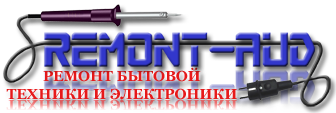|
USB (Universal Serial Bus) is a standard for connecting devices and transferring data. It enables communication, charging, and data exchange between devices like keyboards, mice, smartphones, and printers. In application, USB comes in different connector types, such as USB-A, USB-B, USB Mini, USB Micro, and USB-C. In this guide, we will walk you through the differences between those USB types and share useful tips when buying USB cables.
usb cable type
Table of contents
What Are the Different Types of USB?
Things To Know When Buying USB Cables
Conclusion
FAQ about Types of USB Cables
What Are the Different Types of USB?
USB (Universal Serial Bus) cables differ in their plug types and USB standards. Read further on to see the different types of USB cables and their versions.
USB Port Types
USB ports come in various shapes, each designed for different purposes and offering varying capabilities. Here are the main types of USB ports:
USB Type-A:
One end of most USB cables is a type-A connector. This is a very common type of USB connector that you can see on computers, printers, chargers, etc.
Typically, it has a black rectangle connector that is most commonly used for data transfer up to the standards of USB 2.0 specification. However, the connector can be blue and red for USB 3.0 and USB 3.2 standards. One end of every USB cable is a type-A connector that is used to connect an IT peripheral to a PC.
Anker 331 USB-A to Lightning Cable (Nylon)
$18.99
The Anker Advantage: Join the 50 million+ powered by our leading technology. Enhanced Durability: Improved construction techniques and materials make a iPhone charging cable that lasts 5X longer than the norm. Withstands 90-degree bends over 5000 times, and bears up to 88 lbs of weight. Certified Performance: This iPhone charger cable is MFi certified and equipped with an Apple C48 Lightning plug to ensure total compatibility and high-speed charging. Improved Length: With 6 ft of iPhone charging cable, you're able to "walk and talk" on the phone, relax in bed, or charge in any position that's convenient for you. What You Get: Premium Nylon iPhone Charging Cable, welcome guide, a lifetime warranty, and our friendly customer service.
Learn More
Buy Now
USB Type-B:
USB Type-B is square-shaped and used mainly for devices like printers, scanners, and external hard drives. It is less common in consumer electronics but is often used in larger devices that require higher data transfer rates.
USB Micro-B:
Micro-B is a tiny 5-pin connector that is most common with small electronics like older smartphones, power banks, and game controllers.
The micro-B connector is used for making a data connection between a PC and these small digital devices. It is also used to deliver power to the smartphone 's battery with a charger. The micro-B USB is still common in budget android smartphones that do not have a USB-C receptacle.
USB Mini-B:
Mini-B is slightly larger than Micro-B but smaller than Type-B. It was commonly used for digital cameras, some smartphones, and portable music players.
Mini-B USB connectors are used for data transfer and charging, though they are gradually being replaced by Micro-B and Type-C connectors due to their smaller size and better performance.
USB Type-C:
You must know what is a USB-C port as this is the most common connector today. USB-C charging is the most recent standard of USB technology. It is widely found in smartphones, modern laptops, tablets, power banks, etc.
USB-C features a 24-pin reversible plug which means that you can plug it either up or down. Besides, USB-C offers data transfer speeds up to 20Gbps. See our collection of Anker USB C chargers which can fast charge your smartphones, laptops, power banks, chargers, etc. in a convenient and safe way.
| 
